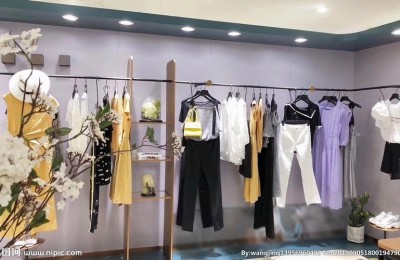After nearly half a month of stable trend, the recent viscose market can be said to have made everyone “worried”. The price of viscose staple fiber was stable on October 10. The current market price of 1.5D*38mm viscose staple fiber is 17,110 yuan/ton, which is the same as yesterday’s price and a year-on-year increase of 17.59%. Based on the principle of “cotton-viscose linkage”, the cotton market has been intensifying recently, so many people are optimistic about the future viscose market. Of course, many people are not optimistic, thinking that the price of viscose is already at a relatively high position and will fall back. possibility, I wonder what colleagues think? The editor doesn’t really believe in a short-term pullback anyway. Let’s see the reasons below.
Today, the Shanghai Fabric Accessories Exhibition opened as scheduled at the Shanghai International Convention and Exhibition Center. Both those present and colleagues who were not present felt the lively atmosphere of the sea of people at the scene. Many major viscose fiber and yarn companies have arranged their booths, and there are huge crowds of people in front of the fiber and yarn booths.
According to the person in charge of a large viscose fiber factory at the scene, the viscose factory is basically running a negative inventory and stepping up production, and the plans are arranged until the end of November. The meeting with viscose bosses in the past few days has further fueled the popularity of viscose. The market situation has been boosted, and the viscose market is expected to rise, but the extent is hard to say for the time being.
Compared with the optimism of fiber mills, the market situation of rayon yarn is not very satisfactory. While viscose fiber is rising, rayon yarn seems “not impatient”. At present, the market price of rayon yarn is generally stable. The mainstream quotation of 30S rayon yarn market is 21,500-22,500 yuan/ton, with sporadic high and low prices. Purchasing enthusiasm is weak, and small-order replenishment is mainly maintained. According to the person in charge of a yarn mill, the downstream gray fabric mills are actually profitable, but they are helpless and unwilling to give profits to the yarn mills. The prices are raised too high, and orders drop sharply. The yarn mills caught in the middle are also helpless. He said that the downstream is in the traditional peak season of “Golden Nine and Silver Ten”. Although the orders are not very fierce, there are still some. However, the downstream does not buy the increase in the price of upstream fiber, and the upstream is raising the price every day. It is uncomfortable and uncomfortable to stock up. Stock up, I’m afraid it will be more expensive in a few days, it’s really confusing.
Many colleagues infer that viscose may be “sustainable” because of the lack of enthusiasm for downstream demand. The editor thinks it is not advisable. Putting aside the current “negative inventory” hole in the upstream operations of viscose fiber factories, the rapid momentum of cotton has really given a boost to viscose. Since October, not only have the purchase prices of seed cotton in Xinjiang and various cotton areas in the mainland continued to “open higher and move higher”, but the quotations of reserve cotton flowing into the market for the second time have also been unable to restrain the upward trend. Calculated from the comprehensive cost, the mainstream price of seed cotton in the mainland is 3.50-3.60 yuan/jin, and the converted lint cost is 15,200-15,800 yuan/ton. The mainstream price of seed cotton in Xinjiang is 6.80-6.90 yuan/kg, and the converted lint cotton cost in Xinjiang is 15,800-16,100 yuan/ton. When transported to the inland delivery warehouse for delivery, the cost of CF1701 will probably not be less than 16,500 yuan/ton, so after the Zheng Cotton Festival There was a big jump at the opening.
Generally speaking, the domestic cotton market has experienced significant growth, and there is a lot of bullish sentiment in the country. Although this year, cotton and viscose have had a trend of “one rises and one falls” for a period of time, but the overall trend is bullish, so the basic “cotton-viscose linkage” effect still exists.
In the long run, in the latter part of 2016/2017, global cotton resources will be reduced and supply will be in short supply. Cotton prices will provide strong support for viscose; judging from the exhibition, the density of viscose fiber and yarn crowds It is not difficult to see that there is still demand downstream. The “push effect” of the upstream voids and the “adsorption effect” of the downstream voids will continue to drive up the price of viscose. We believe that although the previous increase may not be realistic, overall, viscose is still growing steadily in the short term. Strong companies can still choose to prepare some goods in advance, because the price reduction is not good for the current viscose. It’s still a bit too early





